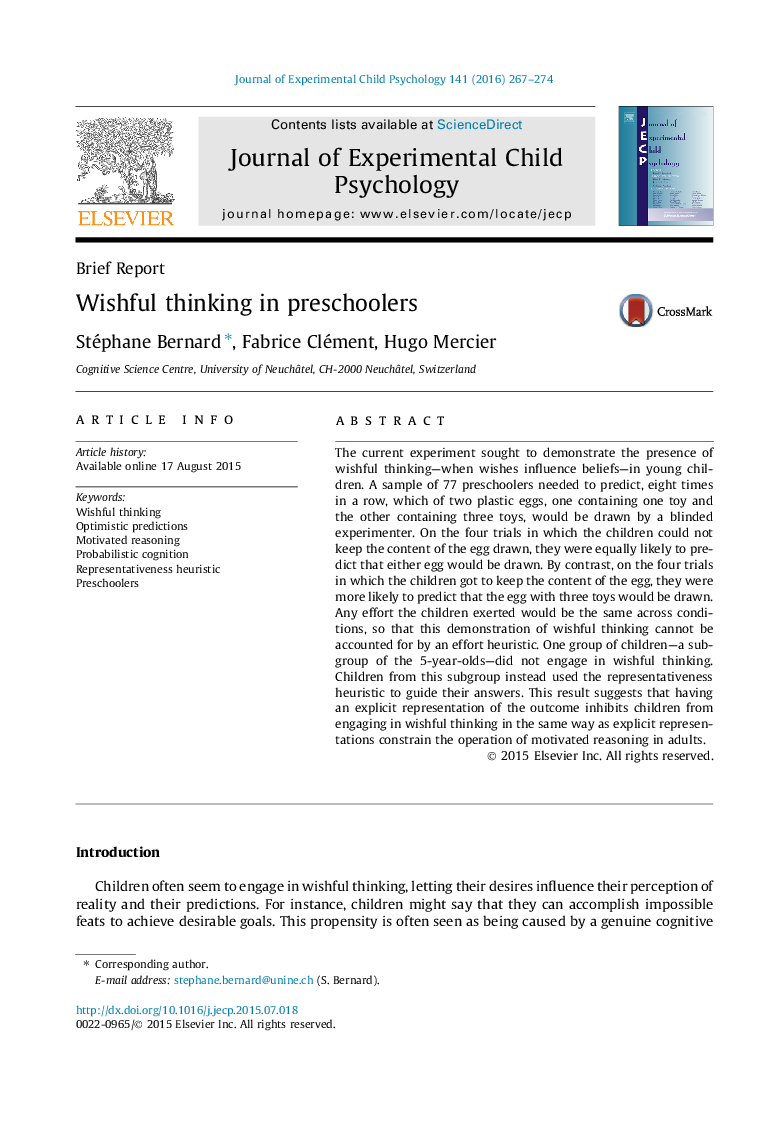| Article ID | Journal | Published Year | Pages | File Type |
|---|---|---|---|---|
| 7274986 | Journal of Experimental Child Psychology | 2016 | 8 Pages |
Abstract
The current experiment sought to demonstrate the presence of wishful thinking-when wishes influence beliefs-in young children. A sample of 77 preschoolers needed to predict, eight times in a row, which of two plastic eggs, one containing one toy and the other containing three toys, would be drawn by a blinded experimenter. On the four trials in which the children could not keep the content of the egg drawn, they were equally likely to predict that either egg would be drawn. By contrast, on the four trials in which the children got to keep the content of the egg, they were more likely to predict that the egg with three toys would be drawn. Any effort the children exerted would be the same across conditions, so that this demonstration of wishful thinking cannot be accounted for by an effort heuristic. One group of children-a subgroup of the 5-year-olds-did not engage in wishful thinking. Children from this subgroup instead used the representativeness heuristic to guide their answers. This result suggests that having an explicit representation of the outcome inhibits children from engaging in wishful thinking in the same way as explicit representations constrain the operation of motivated reasoning in adults.
Related Topics
Social Sciences and Humanities
Psychology
Developmental and Educational Psychology
Authors
Stéphane Bernard, Fabrice Clément, Hugo Mercier,
